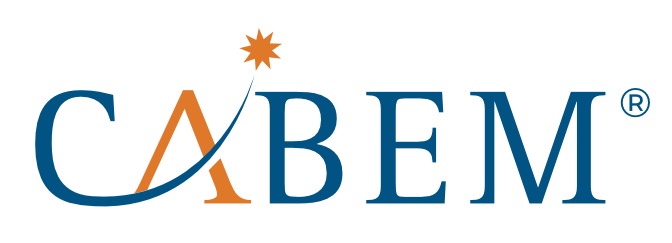4 Benefits Of Using Software to Streamline the Auditing Process
Reports are critical to audits in highly regulated industries, such as construction, aerospace, manufacturing, and healthcare. These industries have complex and demanding learning and training requirements, and they are subject to various laws and regulations designed to ensure that businesses operate in compliance with ethical and legal standards. Auditing is a key tool for ensuring these standards are being met, and reports are essential to the audit process. In this blog, we will explore the value of reports when being audited and how using software to streamline the reporting process in highly regulated industries increases efficiency and effectiveness.
Why are Reports Needed in Highly Regulated Industries?
Reports are typically used in audits to document the results of inspections, reviews, and investigations. They are important for communicating findings and recommendations to auditors, regulators, and other stakeholders. Reports can take many forms, from simple summaries to detailed analyses. They can cover various topics, including financial performance, operational efficiency, compliance with regulatory requirements, and risk management. The use of reports in audits is particularly important in highly regulated industries because it helps ensure that businesses comply with ethical and legal standards. By providing a detailed record of audit findings and recommendations, reports help auditors and regulators to identify areas where improvements are needed and to take appropriate action to address any issues that may arise.
Maintaining consistency and quality across industries and nations is challenging. One way to maintain these necessary checks and balances in a global marketplace is with international standards, also known as ISOs. The International Organization for Standardization is an independent and non-governmental organization that develops standards to ensure the efficiency, safety, and quality of products, services, and systems. The standards include requirements, specifications, guidelines, or characteristics that can be applied consistently within an industry. These standards represent a trusted symbol of quality. Becoming ISO certified allows your business to gain international recognition by meeting the standards important to your industry. It shows commitment to those standards and can be recognized by potential customers, existing customers, and your staff.
ISO standards and audits are closely connected, as audits are a key component of ensuring compliance with ISO standards. External or internal auditors typically conduct audits and can be used to identify areas where an organization may be falling short of ISO standards, as well as opportunities for improvement. By conducting regular audits, organizations can ensure that they meet the requirements of ISO standards, which can help increase efficiency, reduce risk, and improve customer satisfaction.
How Can Using Competency Management Software Streamline the Audit Process?
Competency Management is a fundamental part of regulation and compliance. Compliance and quality management processes have the best chance of succeeding in an organization when a configurable platform allows you to model your organizational hierarchy to assign, prioritize, track, audit, and report activities by role, team, or organization.
Competency management software is one important innovation for competency management that helps organizations adapt quickly to shifting demands. Technology is an integral aspect of our business lives and spans every industry. Software solutions are available now that are designed to streamline your internal operations, which increases both efficiency and compliance. The right software can play an important role in keeping any regulated industry compliant.
The use of software to streamline the reporting process in audits is becoming increasingly popular in many industries. This is particularly true in highly regulated industries where auditors must document compliance with complex regulatory requirements. The value of using software to streamline the reporting process in audits is multifaceted and includes four important benefits:
- Improved Accuracy – Software can be designed to check for errors, inconsistencies, and other issues that can compromise the quality of audit reports. It can also ensure that reports are consistent across multiple audits, reducing the risk of errors caused by human error or misinterpretation.
- Increase Efficiency – Automated reporting processes can significantly reduce the time and resources required to produce audit reports, allowing auditors to focus on other critical aspects of the audit process. For example, the software can automate data collection, analysis, and report generation, allowing auditors to spend more time interpreting data and making recommendations.
- Enhanced Communication – Software can create clear and concise reports that are easy to read and understand, making it easier to communicate findings and recommendations to stakeholders. Additionally, the software can provide real-time access to reports, enabling stakeholders to access and review audit findings as they become available.
- Reduce Costs – By reducing the time and resources required to produce audit reports; businesses can save money on audit-related expenses. Additionally, automated reporting processes can help reduce the risk of errors and inconsistencies, ultimately leading to cost savings by avoiding the need to repeat audits or address compliance issues.
How Can a Skills Matrix Help During an Audit?
A skills matrix is a tool that can be of great value when being audited in a highly regulated industry. In such industries, audits are typically conducted to ensure compliance with various regulatory requirements, including skills and competency. A skills matrix can help businesses to demonstrate compliance by providing a clear and concise overview of employee skills and qualifications.
By providing a comprehensive overview of employee skills and qualifications, a skills matrix can help auditors assess whether a business has the necessary skills and competencies to comply with regulations. This can be particularly important in industries such as healthcare, where staff members may be required to have specific qualifications or certifications.
Another advantage of using a skills matrix when being audited is that it can help to identify areas where training and development are needed. By providing a clear overview of employee skills and qualifications, a skills matrix can help businesses identify any gaps in their workforce and develop targeted training programs to address them. This can help ensure that staff members have the necessary skills and competencies to comply with regulatory requirements.
A skills matrix can also be useful for managing a workforce. By providing a clear overview of employee skills and qualifications, a skills matrix can help businesses identify potential areas for career development and advancement and opportunities for cross-training and knowledge-sharing. This can help create a more skilled and adaptable workforce, better equipped to respond to changing regulatory requirements and industry trends.
Finally, using a skills matrix can also help improve overall operational efficiency. By providing a clear overview of employee skills and qualifications, businesses can ensure that staff members are deployed in roles that align with their skills and competencies. This can help improve productivity, reduce errors, and increase job satisfaction, ultimately leading to better outcomes for the business and its stakeholders.
CABEM Competency Manager is built to address the growing L&D needs to close skills gaps, meet standards and mitigate risk – while reducing the implementation effort. Our configurable system makes audit preparation simple, even in highly-regulated industries.
CABEM’s Competency Manager includes powerful reporting capabilities out of the box. Their skills matrix called the interactive activity grid, is a skills inventory that makes it easy to zero in on user progress toward completion. The Activity Grid allows Managers, Mentors, and System Administrators to view the details of a user’s progress for all assignments, as well as the ability to act through approval signoffs, assessments, and multiple other actions right from within the same screen. Discriminating filters provide the most efficient way to access important real-time business intelligence.
If training and reporting are top priorities for your organization, but your competency management doesn’t feel credible, isn’t repeatable, or leaves your team uneasy as they prepare for audits, CABEM can help. If you want to learn more, please visit our website and schedule a call today.

